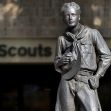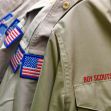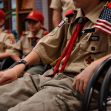Last year, nearly 85,000 people came forward as potential sexual abuse victims of the Boy Scouts of America (BSA). This large quantity of lawsuits was filed after California, New Jersey, New York and other states expanded the options for childhood abuse victims to file suit.
In February of 2020, BSA filed for Chapter 11 bankruptcy. At that time, there were 275 lawsuits in state and federal courts, and another 1,400 potential claims to be filed. The bankruptcy filing was intended to protect BSA’s local councils from bankruptcy. They were granted an injunction that prevented any lawsuits from being pursued against individual councils. However, once it became clear that local councils would be required to participate anyway, BSA came up with a new plan.
On March 1, 2021, BSA filed a reorganization plan as part of its Chapter 11 proceedings. The plan revealed BSA’s intent to create a victim’s trust fund. BSA intends to compensate the potential victims, in part with $300 million of contributions from some of BSA’s 253 councils around the nation. No specific councils or contribution amounts were identified.
BSA will partly fund the settlement trust with approximately $220 million of its assets, including a collection of Norman Rockwell paintings, two Walt Disney paintings, gas interests in several states, rights to a property in Texas, a warehouse facility in North Carolina, and any “unrestricted cash” above a $75 million minimum. The plan didn’t say how much the organization is willing to pay to settle the abuse claims.
The chair of the ad hoc committee of local councils, Ricky Mason, said the plan is “an important step toward a global resolution that both provides meaningful compensation for abuse claims and preserves Scouting for the millions of youth who benefit from its programs today.”
Conversely, Michael Pfau, a lawyer for nearly 1,000 people who have filed abuse claims in the bankruptcy court, declared the $300 million “woefully insufficient” in light of the $1 billion in assets BSA has and the huge number of abuse claims. USA Today estimates BSA’s assets, including the value of its subsidiaries, trusts and endowments, at more than $3.7 billion.
Pfau said, “It’s clearly them trying to ramp up a plan where they literally feel no pain and move beyond this quickly, leaving the abuse survivors in the dust.” He went on, “It’s such a fraction of the assets that they’re able to pay.” Assets omitted from the plan include the Philmont Scout Ranch in New Mexico, a huge amount of property in New York, and the Summit Bechtel Reserve in West Virginia.
John Humphrey is chairman of the court-appointed tort claims committee that represents the abuse victims. He said, “The plan violates every word and the spirit of the Boy Scout oath that each of us took as kids.” Humphrey’s committee’s estimate of the payout for each claimant under BSA’s proposal is $6,100 per claimant. That’s without any contribution from insurance companies.
Humphrey said, “The BSA and its local councils are not making the effort necessary to provide a modicum of compensation to men and women whose lives were changed forever by BSA’s and the local councils’ failure to protect them as children.”
Paul Mones agreed. “It’s really disgraceful,” he said. “Considering the enormity of the problem, are they taking care of survivors as they should? I don’t think so.” Mones is a Los Angeles attorney who represents hundreds of the people who’ve filed abuse claims in the bankruptcy. He also tried a case in 2010 that resulted in $19.9 million in damages. He said that result should have been a wake-up call for BSA, but they’re still trying to go back to the regular order of things.
Mones said, “There was a forest fire in their backyard and they were watching television and having dinner and not thinking anything was wrong. Now the forest fire is at their door and they still think, though the plan will reflect some cutting back, that they can have a plan that will not really inflict any kind of serious pain on them.”
Gill Gayle, a member of the advisory board for the Coalition of Abused Scouts for justice and himself an abuse claimant, said BSA only realized that “the sum total of paying for their deeds exceeds their monetary value” after juries started awarding survivors million-dollar verdicts. He said, “We’re talking about them trying to get a discount on child abuse, on systematic child abuse that occurred decade after decade after decade.”
BSA’s statement described the plan as “a critical step to our emergence from bankruptcy.” The statement reads, “The plan demonstrates that considerable progress has been made as we continue to work with all parties toward achieving our strategy to provide equitable compensation for victims and address our other financial obligations so that we can continue to serve youth for years to come. There are still many aspects of the plan that we are refining through ongoing mediation, but the amended plan is an important step in demonstrating progress that we believe will ultimately lead to a final plan that the bankruptcy court will confirm.”
BSA intends to finish with its Chapter 11 proceedings by this fall. In the next few months, it will file a more specific plan about how they’ll compensate survivors and which councils will be involved, and in what way.
The Chapter 11 proceeding put a hold on hundreds of lawsuits. Those lawsuits and the others filed in the bankruptcy will be negotiated in a global settlement that will release BSA from all liability for past abuse.
The November 16, 2020, deadline for victims to file abuse claims in bankruptcy court passed. Shortly after that, and once the enormity of the number of allegations became clear, a BSA lawyer said the organization needed to settle by the summer of 2021 or it would potentially run out of operating cash.
BSA hired a researcher to analyze its internal records. In 2019 the researcher identified 7,819 suspected abusers. 12,254 potential victims were identified. Once the November deadline passed and all the thousands of claims were filed, BSA said in a statement that the gigantic response was “gut-wrenching.” It said, “We are devastated by the number of lives impacted by past abuse in Scouting and moved by the bravery of those who have come forward. We are heartbroken that we cannot undo their pain. … We are deeply sorry.”
BSA lost significant revenue in 2020 as the pandemic closed schools and stopped in-person Scout programs. BSA membership was already declining prior to the pandemic.
Pfau is not the only one unhappy with BSA’s plan. Lawyers for BSA’s insurance companies, citing “misleading advertising campaigns” and alleging that for-profit-aggregators were behind some of the claims, requested discovery to examine the validity of “tens of thousands” of the claims of abuse. “It appears very clear the Boy Scouts are trying to conceal the fact that these councils are not paying a fair amount, and worse, they are trying to force abuse survivors to give up their claims for close to nothing.”
One of Century Indemnity Company’s lawyers, Tancred Schiavoni, believes the court should allow insurance companies access to some lawyers representing large numbers of the sexual abuse claimants. Schiavoni said, “Century supports a fair resolution for survivors of sexual abuse, but this plan doesn’t get us there. Allowing invalid and fraudulent claims will hurt valid survivors of sexual abuse by delaying and diluting any compensation they may receive.”
“Abused in Scouting” attorney Tim Kosnoff said the insurance companies are “playing games” to prevent paying legitimate claims. Abused in Scouting represents 17,000 accusers.
Kosnoff has sued BSA hundreds of times. He declared BSA’s plan “dead on arrival” and favors eliminating BSA altogether. He said, “Let ‘em fail — burn it to the ground.” His group has been deluged with calls from clients angry about the proposed settlement. “They’re not saying ‘no.’ They are saying ‘hell no!’ This plan is pouring salt in the wound and it is an insult,” he said.
Ralph Morse has alleged abuse at the hands of a scout leader in the 1960s. He thinks the plan should not be approved. He said, “I don’t know how any abuse survivor could vote in favor of BSA’s plan without knowing how much each council has in available assets, how many claims there are against each local council, how much each council is contributing, and how much people with claims against each council are getting. The Boy Scouts are still hiding their files on thousands of alleged perpetrators, and now they are trying to hide these basic details that people need to know to make sure they are getting a fair deal.”
Morse said, “The only thing that is clear is that BSA has no real interest in being held accountable.”






